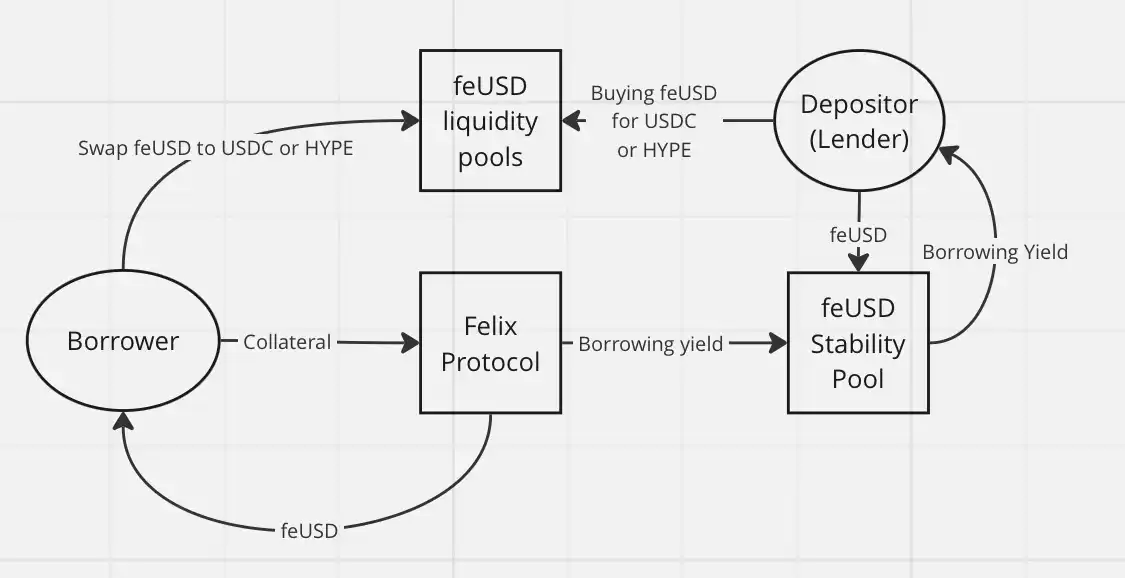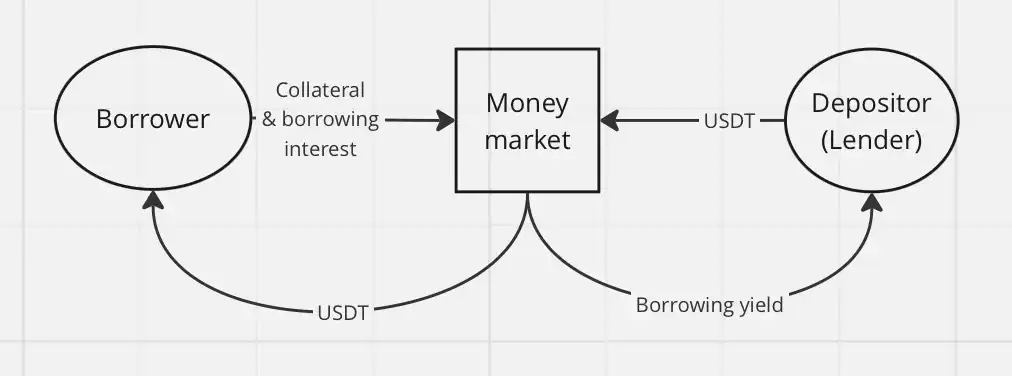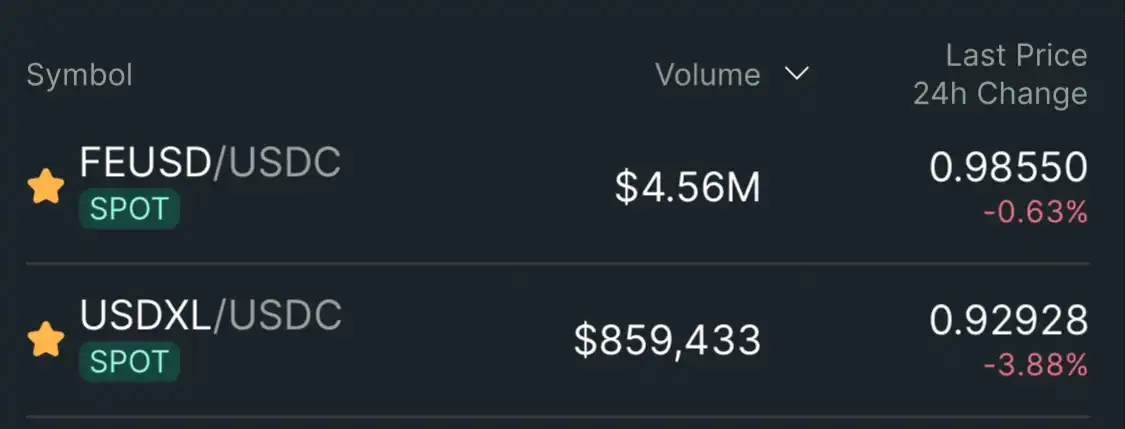The Pseudo-Decentralization Trap: Dissecting the Three Structural Flaws of CDP Stablecoin on HyperEVM
Original title: What's wrong with CDP stablecoins on HyperEVM?
Original Author: @stablealt
Originalcompiler: zhouzhou, BlockBeatsEditor's
note: CDP "stablecoins" such as feUSD and USDXL on HyperEVM were unable to maintain a peg price of $1 due to the lack of a strong arbitrage mechanism, weak demand in Hyperliquid, and low borrowing costs, causing their prices to fall below $1. Hyperliquid natively offers leveraged trading, and users don't need CDP stablecoins. As airdrops and point rewards run out, CDP tokens will lose value and will eventually not be able to sustain themselves.
The following is the original content (the original content has been edited for ease of reading and comprehension):
Disclaimer: This article is not an FUD or attack on HyperEVM's CDP protocol.
In short: CDP stablecoins, such as feUSD and USDXL, are not actually volatile or capital-efficient. They lack a strong arbitrage mechanism, have limited use cases, and are mainly used for leveraged trading, while Hyperliquid already natively provides a better user experience and liquidity. As a result, these tokens are trading below their $1 peg price, and without incentives like airdrops, they are likely to fade away.
Collateralized Debt Position (CDP) stablecoins promise to provide a decentralised alternative to dollar-backed stablecoins (such as USD and USDT) or centralised synthetic dollars (such as USDe), but the reality is often not as expected. feUSD, USDXL, and KEI are some of the latest examples of attempts to emulate Liquity, but they all face serious issues such as anchoring stability, scalability, or incentive design flaws.
This article will break down what these problems are, what paid KOLs aren't telling you, and why these problems aren't just growing pains – they're structural.
CDP Design
OverviewLet's start with the basic concept: a CDP "stablecoin" is not actually a real stablecoin or a "USD" token. That's why DAI is called "DAI" instead of USDD or something else. The CDP stablecoin is misnamed with the "USD" prefix and may mislead DeFi newcomers. They do not have an arbitrage mechanism and do not have direct guarantees. Each CDP token is minted out of thin air and may be well below the value of $1.
To mint a CDP token, users must lock up more than 100% of the value of collateral in order to lend the tokens. This reduces capital efficiency and limits growth. In order to mint 1 token, you need to lock up more than $1 in value. Depending on the loan-to-value ratio, this ratio may be higher.
Without the addition of means-heavy mechanisms like Felix's redemption (when arbitrageurs can steal someone's collateral if the borrowing rate is too low) or Dai's PSM module, CDP tokens simply can't maintain a 1:1 peg to the US dollar, especially when their primary use case is leveraged trading.
In DeFi, CDP is just another form of lending. Borrowers mint CDP stablecoins and exchange them for other assets or yield strategies that they believe will exceed the protocol lending rate.
What happened?
Everyone swaps their CDP stablecoin for other assets, usually more stable centralised assets like USDC or USDT, or for more volatile assets (such as HYPE) for leveraged trading. There is no point in holding these tokens, especially if you need to pay an annualised yield (APY) on Felix: feUSD borrows at an annualised yield (APY) of 7% on Felix, and USDXL borrows at an APY of 10.5% on HypurrFi.
Take USDXL as an example: it doesn't have a local use case, and users have no reason to hold it. That's why it can fluctuate at $0.80, $1.20, etc. – the price is not anchored by any actual arbitrage mechanism. Its price simply reflects the user's need to borrow HYPE. When USDXL is trading above $1, borrowers can borrow more USD; For less than $1, the borrower borrows less – it's as simple as that.
feUSD is slightly better. Felix provides users with a stability pool where users can earn 75% from borrowing fees and liquidation bonuses, with an annualised yield of around 8% at the moment. This has helped reduce price volatility, but like USDXL, there is still no strong arbitrage mechanism to keep feUSD firmly at $1. Its price will still fluctuate depending on the demand for borrowing.

The core problem is that users who buy feUSD and put it into a stable pool are essentially lending their USDC or HYPE (via Felix) to the person who minted feUSD. These CDP tokens have no intrinsic value. They are only valuable if they are paired with valuable tokens like HYPE or USDC in liquidity pools.
This introduces third-party risk, and without airdrops or other incentives, DeFi users have virtually little reason to borrow illiquid, unpegged tokens, such as feUSD or USDXL, or buy them as exit liquidity for borrowers. Why do this when you can borrow stablecoins like USDT or USDe directly? The stablecoins you borrow will eventually be converted into other tokens anyway, so you don't need to care about the decentralisation of the borrowed assets.
 – >
– >
classic lending is much simpler through a money market flywheel mechanism, such as Hyperlend, and has the same economic effect on the end user.
Another reason why CDP hasn't been successful in HyperEVM: leveraged trading is already a native feature of the Hyperliquid ecosystem. On other chains, CDP offers decentralised leveraged trading. On Hyperliquid, users only need to use the platform itself, take advantage of leveraged perpetual contracts (perps) and a great user experience, and do not need to rely on CDP stablecoins.
 – >
– >
Hyperliquid, there is no need for leveraged trading through third-party protocols at all. The only use case I see for CDP is for circular operations for leveraged farms and HLP.
To summarise, here are the reasons for the poor performance of CDP "stablecoins" on HyperEVM:
• Lack of a strong arbitrage mechanism
• Weak demand for CDP products in Hyperliquid
• Low borrowing costs and no reason to hold CDP tokens

As a result, CDP "stablecoins" like feUSD and USDXL are trading at soft pegs below $1: $0.985 (-1.5%) for feUSD and $0.93 (-7%) for USDXL.
Conclusion: I don't see any potential for CDP stablecoins in the Hyperliquid ecosystem. Users don't need them – Hyperliquid already offers a better user experience and deeper liquidity, with native support for leveraged trading. Once the airdrop and points reward program is exhausted, the CDP token will lose its remaining use value.
Hypurrliquid, don't do exit liquidity.
